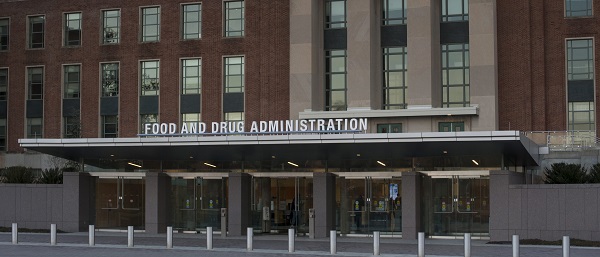Education
40 Canadian professors urge Trudeau government to abolish DEI mandates

From LifeSiteNews
“Many agree with us – including senior, tenured faculty – but will not speak publicly for fear of repercussions”
Dozens of Canadian professors have joined together to call for an end to the pro-LGBT diversity, equity, and inclusion (DEI) mandates in universities.
In a May 24 letter to Parliament, 40 Canadian university professors appealed to Prime Minster Justin Trudeau’s Liberal government to abandon DEI initiatives in universities, arguing they are both ineffective and harmful to Canadians.
“While some may view this as a weakness, we hope most will see it simply as an act of conscience from academics no longer able to remain silent,” the professors began.
“These policies disproportionately punish small institutions, are not supported by evidence, employ flawed metrics with no end goal, and are unpopular with the public who funds the research,” the letter explained.
“Many agree with us – including senior, tenured faculty – but will not speak publicly for fear of repercussions,” the letter revealed. “Specifically, they are scared even to question Tri-Council policies relating to equity, diversity, and inclusion (EDI).”
Currently, DEI quotas are mandated across Canada through the Canada Research Chairs program. Under the program, universities must meet specific hiring requirements, skewed in favor of racial minorities and those who identify as “LGBT.”
The letter cited various studies which revealed that the DEI mandates not only harm universities but lead to more discrimination.
The professors referenced a case at Laurier University in Ontario where the institution sought to hire six black and six indigenous faculty.
“During the process, an informal outside inquiry made on behalf of a promising black candidate had to be rebuffed because black people were ineligible,” the letter explained. “This open racial discrimination in the name of fighting systemic racism is one concrete example of negative impacts of EDI.”
Similarly, a February research report from Wilfrid Laurier University social scientist David Millard Haskell, a signatory of the letter, found that there is “no evidence that EDI reduces bias or alters behavior.”
“In fact, DEI interventions have been shown to do harm by increasing prejudice and activating bigotry,” the letter declared.
The professor’s recommendation comes as Trudeau recently pledged $110 million of taxpayer money to hire DEI consultants tasked with looking into a supposed problem of “racism” in Canada.
Indeed, the Trudeau government has spent over $30 million on DEI-affiliated contracts among many federal ministries since January 2019.
This has led to an increase in woke ideology creeping into all parts of society. As LifeSiteNews reported recently, the University of British Columbia (UBC) Vancouver campus posted an opening for a research chair position that essentially barred non-homosexual white men from applying for the job.
Signatories:
Geoff Horsman, PhD
Associate Professor of Chemistry & Biochemistry, Wilfrid Laurier University
David Haskell, PhD
Associate Professor of Digital Media & Journalism, and Religion & Culture, Wilfrid Laurier University
Zachary Patterson, PhD
Professor, Concordia Institute for Information Systems Engineering, Concordia University
Stephen Lupker, PhD
Professor of Psychology, Western University
Lawrence M. Krauss, PhD
President, The Origins Project Foundation
Foundation Professor, School of Earth and Space Exploration, Arizona State University, retired
Kirsten Kramar, PhD
Mount Royal University
Stephen Quilley, PhD
Associate Professor of Social and Environmental Innovation, University of Waterloo
Scott Davies, PhD
Professor of Leadership, Higher and Adult Education, University of Toronto
Edward Vrscay, PhD
Professor Emeritus of Applied Mathematics, University of Waterloo
Martin Drapeau, PhD
Professor of Counselling Psychology and Psychiatry, McGill University
Frances Widdowson, PhD
Political Science professor
Brian F. Smith, PhD
Professor of Business and Economics, Wilfrid Laurier University
Christopher Dummitt, PhD
Professor of Canadian Studies, Trent University
Altay Coskun, PhD
Professor of Classical Studies, University of Waterloo
Ron Thomson, PhD
Professor and Chair of Applied Linguistics, Brock University
Chet Robie, PhD
Professor of Organizational Behaviour & Human Resource Management, Wilfrid Laurier University
Mark Collard, PhD
Canada Research Chair in Human Evolutionary Studies and Professor of Archaeology, Simon Fraser University
Janice Fiamengo, PhD
Professor of English, University of Ottawa, retired
Philip Carl Salzman, PhD
Professor Emeritus of Anthropology, McGill University
Laurence Klotz, CM, MD, FRCSC
Professor of Surgery, University of Toronto
Sunnybrook Chair of Prostate Cancer Research
Chair, Council for Academic Freedom at University of Toronto (CAFUT)
Member, Order of Canada
Division of Urology, Sunnybrook Health Sciences Centre
Brad Fedy, PhD
Associate Professor, School of Environment, Resources and Sustainability, University of Waterloo
Scott Smith, PhD
Professor of Chemistry & Biochemistry, Wilfrid Laurier University
Henry Wolkowicz, PhD
Professor of Combinatorics and Optimization, University of Waterloo
Gail S. K. Wolkowicz, PhD
Professor of Mathematics and Statistics, McMaster University
François Charbonneau, PhD
Associate Professor, School of Political Studies, University of Ottawa
Rima Azar, PhD
Associate Professor of Health Psychology, Mount Allison University
Douglas W. Allen, PhD
Burnaby Mountain Professor, Department of Economics, Simon Fraser University
Rachel Altman, PhD
Associate Professor, Department of Statistics and Actuarial Science, Simon Fraser University
Alexandra Lysova, PhD
Associate Professor, School of Criminology, Simon Fraser University
Richard Frank, PhD
Associate Professor, School of Criminology, Simon Fraser University
John Craig, PhD
Professor, Department of History, Simon Fraser University
Dennis Sandgathe, PhD
Senior Lecturer, Department of Archaeology, Simon Fraser University
Mike Hart, PhD
Professor, Department of Biological Sciences, Simon Fraser University
William McNally, PhD
Professor of Finance, Wilfrid Laurier University
Yannick Lacroix, PhD
Professor of Philosophy, Collège de Maisonneuve
Julie Guyot, PhD
Professor of History, Cégep Édouard-Montpetit
Leigh Revers, PhD
Associate Professor, Department of Chemical & Physical Sciences, Institute of Management for Innovation, University of Toronto
Rob Whitley, PhD
Associate Professor of Psychiatry, McGill University
François Caron
Professor of Chemistry, Royal Military College of Canada, Kingston
Emeritus Professor, Laurentian University
Alberta
Schools should go back to basics to mitigate effects of AI

From the Fraser Institute
Odds are, you can’t tell whether this sentence was written by AI. Schools across Canada face the same problem. And happily, some are finding simple solutions.
Manitoba’s Division Scolaire Franco-Manitobaine recently issued new guidelines for teachers, to only assign optional homework and reading in grades Kindergarten to six, and limit homework in grades seven to 12. The reason? The proliferation of generative artificial intelligence (AI) chatbots such as ChatGPT make it very difficult for teachers, juggling a heavy workload, to discern genuine student work from AI-generated text. In fact, according to Division superintendent Alain Laberge, “Most of the [after-school assignment] submissions, we find, are coming from AI, to be quite honest.”
This problem isn’t limited to Manitoba, of course.
Two provincial doors down, in Alberta, new data analysis revealed that high school report card grades are rising while scores on provincewide assessments are not—particularly since 2022, the year ChatGPT was released. Report cards account for take-home work, while standardized tests are written in person, in the presence of teaching staff.
Specifically, from 2016 to 2019, the average standardized test score in Alberta across a range of subjects was 64 while the report card grade was 73.3—or 9.3 percentage points higher). From 2022 and 2024, the gap increased to 12.5 percentage points. (Data for 2020 and 2021 are unavailable due to COVID school closures.)
In lieu of take-home work, the Division Scolaire Franco-Manitobaine recommends nightly reading for students, which is a great idea. Having students read nightly doesn’t cost schools a dime but it’s strongly associated with improving academic outcomes.
According to a Programme for International Student Assessment (PISA) analysis of 174,000 student scores across 32 countries, the connection between daily reading and literacy was “moderately strong and meaningful,” and reading engagement affects reading achievement more than the socioeconomic status, gender or family structure of students.
All of this points to an undeniable shift in education—that is, teachers are losing a once-valuable tool (homework) and shifting more work back into the classroom. And while new technologies will continue to change the education landscape in heretofore unknown ways, one time-tested winning strategy is to go back to basics.
And some of “the basics” have slipped rapidly away. Some college students in elite universities arrive on campus never having read an entire book. Many university professors bemoan the newfound inability of students to write essays or deconstruct basic story components. Canada’s average PISA scores—a test of 15-year-olds in math, reading and science—have plummeted. In math, student test scores have dropped 35 points—the PISA equivalent of nearly two years of lost learning—in the last two decades. In reading, students have fallen about one year behind while science scores dropped moderately.
The decline in Canadian student achievement predates the widespread access of generative AI, but AI complicates the problem. Again, the solution needn’t be costly or complicated. There’s a reason why many tech CEOs famously send their children to screen-free schools. If technology is too tempting, in or outside of class, students should write with a pencil and paper. If ChatGPT is too hard to detect (and we know it is, because even AI often can’t accurately detect AI), in-class essays and assignments make sense.
And crucially, standardized tests provide the most reliable equitable measure of student progress, and if properly monitored, they’re AI-proof. Yet standardized testing is on the wane in Canada, thanks to long-standing attacks from teacher unions and other opponents, and despite broad support from parents. Now more than ever, parents and educators require reliable data to access the ability of students. Standardized testing varies widely among the provinces, but parents in every province should demand a strong standardized testing regime.
AI may be here to stay and it may play a large role in the future of education. But if schools deprive students of the ability to read books, structure clear sentences, correspond organically with other humans and complete their own work, they will do students no favours. The best way to ensure kids are “future ready”—to borrow a phrase oft-used to justify seesawing educational tech trends—is to school them in the basics.
Business
Why Does Canada “Lead” the World in Funding Racist Indoctrination?
-

 Alberta2 days ago
Alberta2 days agoOttawa-Alberta agreement may produce oligopoly in the oilsands
-

 Energy2 days ago
Energy2 days agoWestern Canada’s supply chain for Santa Claus
-

 International2 days ago
International2 days ago$2.6 million raised for man who wrestled shotgun from Bondi Beach terrorist
-

 Energy2 days ago
Energy2 days agoThe Top News Stories That Shaped Canadian Energy in 2025 and Will Continue to Shape Canadian Energy in 2026
-

 armed forces23 hours ago
armed forces23 hours agoRemembering Afghanistan and the sacrifices of our military families
-

 Opinion24 hours ago
Opinion24 hours agoPope Leo XIV’s Christmas night homily
-

 Fraser Institute23 hours ago
Fraser Institute23 hours agoHow to talk about housing at the holiday dinner table
-

 Frontier Centre for Public Policy23 hours ago
Frontier Centre for Public Policy23 hours agoTent Cities Were Rare Five Years Ago. Now They’re Everywhere















